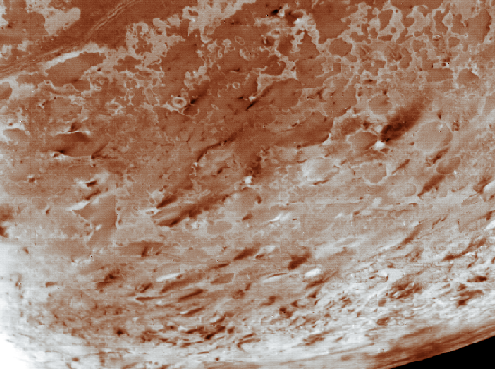
Geysers on Triton
Credit: NASA, Voyager Project, Copyright Calvin J. Hamilton
Discover the cosmos! Each day we feature a different image or photograph of our fascinating universe, along with a brief explanation written by a professional astronomer.
August 5, 1995

Geysers on Triton
Credit: NASA, Voyager Project,
Copyright Calvin J. Hamilton
Explanation: In August of 1989 NASA's Voyager 2 spacecraft passed by Neptune, the most distant of the solar system's gas giant planets. Its encounter with Neptune climaxed with its closest approach to Neptune's largest moon Triton. From a distance of about 24,000 miles the robot space probe surveyed Triton's surface, whose temperature averages nearly -400 degrees Fahrenheit, and discovered surprising evidence of a complex and active world. For example, the prominent dark streaks in this image seem to come from small volcanoes and may consist of nitrogen frost mixed with organic compounds ejected during geyser-like eruptions.
For more information about Triton, see Calvin J. Hamilton's Triton page .
Tomorrow's picture: Liftoff of Space Shuttle Columbia.